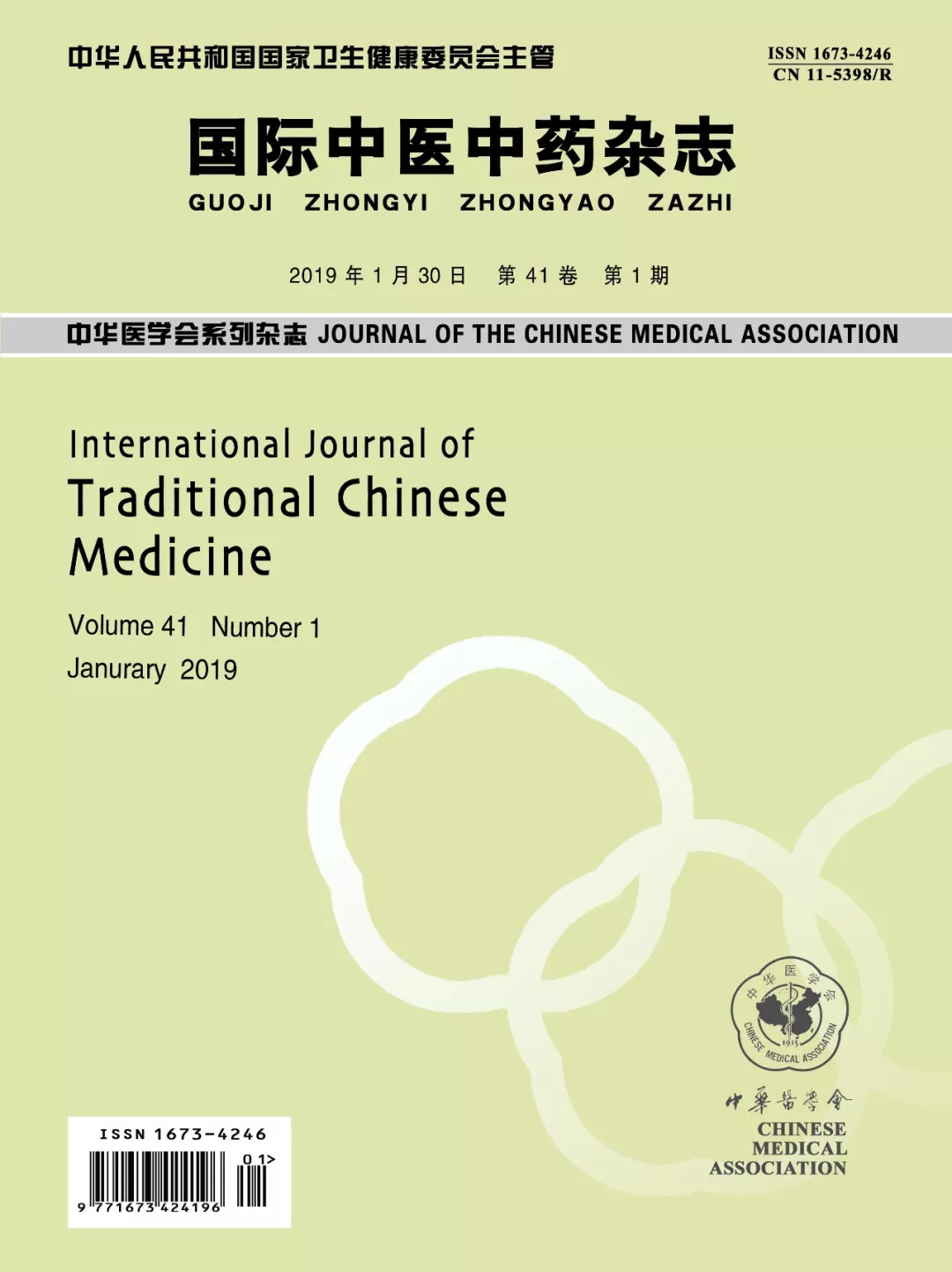术前影像学检查对胰腺癌预后价值的研究进展
作者:曲超,王高鸣,王行雁,原春辉,修典荣
文章来源:中华普通外科杂志, 2022, 37(1)
摘 要
胰腺癌是人类消化系统最致命的恶性肿瘤之一,在全世界与癌症相关的死亡原因中排第四位。由于肿瘤细胞浸润胰腺周围结构和侵袭主要血管的发生相对较早,使得临床医生很难拥有能够早期发现肿瘤细胞的高灵敏度和特异性的筛查方法,很多患者发现胰腺癌时已处于晚期,无法行根治性的手术,有文献报道大约只有10%~25%的胰腺癌患者可以进行根治性切除。对于可手术的患者,重要的是要在术前确定预后因素以预测手术后无病生存期以及总生存期。此类信息有利于临床医生的个性化精准治疗。本文就术前影像学的表现在预测胰腺癌术后生存上的价值研究的进展进行综述。
胰腺癌是人类消化系统最致命的恶性肿瘤之一,在全世界与癌症相关的死亡原因中排第四位[1]。很多患者发现胰腺癌时已处于晚期,文献报道大约只有10%~25%的胰腺癌患者可以进行根治性切除[2, 3]。经过手术切除的胰腺癌患者的总体生存率仍然很差,五年生存率仅有10%~25%[4, 5, 6]。对于可手术的患者,确定术前预后因素以预测手术后无病生存期(DFS)以及总生存期(OS)有助于临床医生的个性化精准治疗。本文就术前影像学的表现在预测胰腺癌术后生存上的价值的研究进展进行综述。
一、术前CT影像在胰腺癌预后评价中的应用
目前,胰腺增强CT已被广泛应用于胰腺癌的分期和可切除性方面的评估,并用来反映疾病的严重程度和预后[7, 8, 9]。Torphy等[10]发现胰腺癌在静脉期CT中肿瘤增强率与肿瘤基质密度(TSD)相关,在手术切除的病例中,高基质含量与良好的预后相关。Hwang等[11]提出用胰腺癌术前的CT影像指标和临床资料,采用列线图预测手术治疗患者的DFS和OS。他们发现根据术前CT(包括肿瘤的坏死情况、可能的静脉侵犯、疑似转移性区域淋巴结以及相关胰腺炎或假性囊肿)和术前血清CA19-9≥34 U/ml得出的列线图可以评估可切除胰头癌根治术后复发和死亡的风险。
Noda等[12]研究发现强化CT中胰腺实质期不规则的肿瘤边缘和CT值的峰度是胰腺癌患者OS的预后因素。Cai等[13]发现胰腺肿瘤与周围胰腺之间的衰减差异是最具决定性的影像学特征,衰减差异明显的肿瘤与更差的组织学分级和较不广泛的肿瘤纤维基质部分相关。低衰减差异肿瘤患者预后较好,而那些高衰减差异肿瘤患者无论肿瘤大小如何都预后不良。Sandini等[14]发现评估强化CT上主胰管与胰腺厚度比与术后长期生存率有关。
胰腺切除术后胰腺癌患者的局部复发和远处转移对患者术后生存影响很大。Suzuki等[15]研究确定了一个新的预后评分,该评分结合距肝总动脉或肠系膜上动脉的距离,并结合血清CA19-9预测切除后胰腺癌患者的局部复发。Kaissis等[16]发现门静脉汇合轮廓不规则性是肿瘤细胞实际渗入血管壁或肿瘤/静脉界面的有力预测指标。Yoo等[17]研究发现动态增强的CT图像上肿瘤显著性评分(正常实质与肿瘤病变之间的衰减率)与影像学和病理学肿瘤大小均呈正相关。Kim等[18]使用临床和CT变量开发和验证了一套术前风险评分系统,发现CT影像中的肿瘤大小、门静脉期低密度肿瘤、肿瘤坏死、胰周肿瘤浸润和可疑转移性淋巴结,五个独立变量可以预测复发或死亡的风险。
二、术前MRI影像在胰腺癌预后评价中的应用
对术前MRI影像的研究相对较少,Kim等[19]发现MRI在胰腺癌的可切除性和预后评估方面有自己的优势,是能够弥补强化CT的一些不足,建议在标准分期CT之外进行MRI检查。Zhao等[20]回顾性研究了胰腺腺鳞癌的CT和MRI影像学特征以及与预后之间的关系,发现MRI对血管侵犯、主胰管扩张的评估方面更有优势。在最新的研究报道中,Tang等[21]开发了包含CA19-9水平和临床阶段的放射线列线图,他们发现基于MRI的放射线诺模图可以有效地评估可切除胰腺癌患者的早期复发风险,这有可能改善胰腺癌的治疗策略并促进个性化治疗。
三、术前PET-CT影像在胰腺癌预后评价中的应用
目前对PET-CT在胰腺癌方面应用的研究主要体现在对胰腺癌的诊断、复发、不可切除性胰腺癌的治疗方面。Rose等[22]发现18FDG-PET在检测小原发性肿瘤以及发现肝转移和远处转移方面比CT更为灵敏和特异。Ergul等[23]通过与CT、MRI和内镜超声(EUS)的比较,发现当SUVmax的截止值为3.2时,能获得最有效的灵敏度和特异性值,在30%的胰腺癌患者中,PET-CT有助于胰腺癌的治疗决策。Xu等[24]发现代谢肿瘤体积和总病变糖酵解与基线血清CA19-9水平具有较强的相关性,可以更好地预测OS和无复发生存率(RFS)。Kim等[25]的研究发现18FDG-PET-CT在可切除胰腺癌患者中预测淋巴结转移的诊断准确性高于增强CT。在DFS和OS中,只有PET-CT的淋巴结和肿瘤的SUV比值是独立的预后因素。
四、术前超声影像在胰腺癌预后评价中的应用
EUS在胰腺癌的诊断方面有着自身独特的优势,接近100%的高阴性预测值可以比较可靠地排除胰腺癌[26]。Ngamruengphong等[27]发现EUS评估与局部胰腺癌患者的预后改善独立相关,这可能是与发现较早、更多地进行了根治性手术有关。Nawaz等[28]认为相比于CT,EUS评估胰腺癌的淋巴结分期、血管侵犯和可切除性更准确。但由于受到超声技术的一些限制,术前EUS对胰腺癌患者手术预后的评估能力有限,需要结合上文中提到的其他检查手段一同评估预测。
五、放射性基因组学
放射基因组学是一个新兴的领域,融合了放射遗传学和基因组学。Iwatate等[29]发现放射基因组学预测的p53突变与胰腺癌不良预后显著相关。Wang等[9]发现胰腺肿瘤的CT增强与病理分级和肿瘤微血管密度(MVD)计数呈负相关,而病理分级与MVD计数呈正相关。Noda等[12]发现TNM分期和E-钙黏着蛋白(E-cadherin)表达状态与OS独立相关,且胰腺实质期不规则的肿瘤边缘和CT值的峰度可能是抑制E-钙粘蛋白的指标。
Attiyeh等[30]通过靶向DNA测序确定胰腺癌驱动基因(KRAS,TP53,CDKN2A和SMAD4)的突变状态,并通过免疫组化验证结果,他们从术前CT扫描中提取肿瘤的放射学特征,发现其与SMAD4状态和基因改变数目有关,并且是预测OS的唯一因素。Kaissis等[31]通过免疫组化染色将KRT81和HNF1α分为准间充质和非准间充质,根据辐射特征预测分子亚型,成功预测到与患者生存率高度相关的胰腺癌分子亚型。Takahashi等[32]发现在高SUVmax组中,高Glut-1表达组胰腺癌患者的OS和DFS明显缩短。相信随着对放射基因组学的认识和理解的逐渐深入,影像学结合基因组学和免疫组化的相关研究会成为对胰腺癌术后生存预测的研究热点。
六、小结
综上所述,通过术前的影像学检查对可切除的胰腺癌患者预后进行评估是目前研究的热点。对强化CT的研究成果报道较多,MRI检查、PET-CT显像、EUS等检查是很好的补充手段,上述检查手段的互补研究能否提高对胰腺癌患者术后生存的预测还有待进一步研究。胰腺癌细胞恶性程度高低可能在影像学中有特异性的表现,在病理免疫组化中也会有特征性的阳性表现。放射性基因组学将影像学的发现与基因组学相结合,从基因表达层面印证影像学的发现,进一步解释影像学表现的差异原因。相信随着对放射基因组学的认识和理解的逐渐深入,影像学结合基因组学和免疫组化的相关研究会成为对胰腺癌术后生存预测的研究热点。
参考文献
[1]
SiegelRL, MillerKD, JemalA. Cancer statistics, 2018[J]. CA Cancer J Clin, 2018,68(1):7-30. DOI: 10.3322/caac.21442.
[2]
BilimoriaKY, BentremDJ, KoCY, et al. National failure to operate on early stage pancreatic cancer[J]. Ann Surg, 2007,246(2):173-180. DOI: 10.1097/SLA.0b013e3180691579.
[3]
KangMJ, JangJY, LeeSE, et al. Comparison of the long-term outcomes of uncinate process cancer and non-uncinate process pancreas head cancer: poor prognosis accompanied by early locoregional recurrence[J]. Langenbecks Arch Surg, 2010,395(6):697-706. DOI: 10.1007/s00423-010-0593-6.
[4]
FerroneCR, BrennanMF, GonenM, et al. Pancreatic adenocarcinoma: the actual 5-year survivors[J]. J Gastrointest Surg, 2008,12(4):701-706. DOI: 10.1007/s11605-007-0384-8.
[5]
FerroneCR, Pieretti-VanmarckeR, BloomJP, et al. Pancreatic ductal adenocarcinoma: long-term survival does not equal cure[J]. Surgery, 2012,152(3Suppl 1):S43-S49. DOI: 10.1016/j.surg.2012.05.020.
[6]
HeJ, AhujaN, MakaryMA, et al. 2 564 resected periampullary adenocarcinomas at a single institution: trends over three decades[J]. HPB (Oxford), 2014,16(1):83-90. DOI: 10.1111/hpb.12078.
[7]
BrennanDD, ZamboniGA, RaptopoulosVD, et al. Comprehensive preoperative assessment of pancreatic adenocarcinoma with 64-section volumetric CT[J]. Radiographics, 2007,27(6):1653-1666. DOI: 10.1148/rg.276075034.
[8]
YoonSH, LeeJM, ChoJY, et al. Small (≤20 mm) pancreatic adenocarcinomas: analysis of enhancement patterns and secondary signs with multiphasic multidetector CT[J]. Radiology, 2011,259(2):442-452. DOI: 10.1148/radiol.11101133.
[9]
WangSH, SunYF, LiuY, et al. CT contrast enhancement correlates with pathological grade and microvessel density of pancreatic cancer tissues[J]. Int J Clin Exp Pathol, 2015,8(5):5443-5449.
[10]
TorphyRJ, WangZ, True-YasakiA, et al. Stromal content is correlated with tissue site, contrast retention, and survival in pancreatic adenocarcinoma[J]. JCO Precis Oncol, 2018,2018. DOI: 10.1200/PO.17.00121.
[11]
HwangSH, KimHY, LeeEJ, et al. Preoperative clinical and computed tomography (CT)-based nomogram to predict oncologic outcomes in patients with pancreatic head cancer resected with curative intent: a retrospective study[J]. J Clin Med, 2019, 8(10). DOI: 10.3390/jcm8101749.
[12]
NodaY, GoshimaS, TsujiY, et al. Prognostic evaluation of pancreatic ductal adenocarcinoma: associations between molecular biomarkers and CT imaging findings[J]. Pancreatology, 2019,19(2):331-339. DOI: 10.1016/j.pan.2019.01.016.
[13]
CaiX, GaoF, QiY, et al. Pancreatic adenocarcinoma: quantitative CT features are correlated with fibrous stromal fraction and help predict outcome after resection[J]. Eur Radiol, 2020,30(9):5158-5169. DOI: 10.1007/s00330-020-06853-2.
[14]
SandiniM, Negreros-OsunaAA, QadanM, et al. Main pancreatic duct to parenchymal thickness ratio at preoperative imaging is associated with overall survival in upfront resected pancreatic cancer[J]. Ann Surg Oncol, 2020,27(5):1606-1612. DOI: 10.1245/s10434-019-08040-0.
[15]
SuzukiF, FujiwaraY, HamuraR, et al. Combination of distance from superior mesenteric artery and serum CA19-9 as a novel prediction of local recurrence in patients with pancreatic cancer following resection[J]. Anticancer Res, 2019,39(3):1469-1478. DOI: 10.21873/anticanres.13264.
[16]
KaissisGA, LohöferFK, ZiegelmayerS, et al. Borderline-resectable pancreatic adenocarcinoma: contour irregularity of the venous confluence in pre-operative computed tomography predicts histopathological infiltration[J]. PLoS One, 2019,14(1):e0208717. DOI: 10.1371/journal.pone.0208717.
[17]
YooHJ, YouMW, HanDY, et al. Tumor conspicuity significantly correlates with postoperative recurrence in patients with pancreatic cancer: a retrospective observational study[J]. Cancer Imaging, 2020,20(1):46. DOI: 10.1186/s40644-020-00321-2.
[18]
KimDW, LeeSS, KimSO, et al. Estimating recurrence after upfront surgery in patients with resectable pancreatic ductal adenocarcinoma by using pancreatic CT: development and validation of a risk score[J]. Radiology, 2020, 296(3):541-551. DOI: 10.1148/radiol.2020200281.
[19]
KimHJ, ParkMS, LeeJY, et al. Incremental role of pancreatic magnetic resonance imaging after staging computed tomography to evaluate patients with pancreatic ductal adenocarcinoma[J]. Cancer Res Treat, 2019,51(1):24-33. DOI: 10.4143/crt.2017.404.
[20]
ZhaoR, JiaZ, ChenX, et al. CT and MR imaging features of pancreatic adenosquamous carcinoma and their correlation with prognosis[J]. Abdom Radiol (NY), 2019,44(8):2822-2834. DOI: 10.1007/s00261-019-02060-w.
[21]
TangTY, LiX, ZhangQ, et al. Development of a novel multiparametric MRI radiomic nomogram for preoperative evaluation of early recurrence in resectable pancreatic cancer[J]. J Magn Reson Imaging, 2020,52(1):231-245. DOI: 10.1002/jmri.27024.
[22]
RoseDM, DelbekeD, BeauchampRD, et al. 18Fluorodeoxyglucose-positron emission tomography in the management of patients with suspected pancreatic cancer[J]. Ann Surg, 1999,229(5):729-738. DOI: 10.1097/00000658-199905000-00016.
[23]
ErgulN, GundoganC, TozluM, et al. Role of (18)F-fluorodeoxyglucose positron emission tomography/computed tomography in diagnosis and management of pancreatic cancer; comparison with multidetector row computed tomography, magnetic resonance imaging and endoscopic ultrasonography[J]. Rev Esp Med Nucl Imagen Mol, 2014,33(3):159-164. DOI: 10.1016/j.remn.2013.08.005.
[24]
XuHX, ChenT, WangWQ, et al. Metabolic tumour burden assessed by 18F-FDG PET/CT ssociated with serum CA19-9 predicts pancreatic cancer outcome after resection[J]. Eur J Nucl Med Mol Imaging, 2014,41(6):1093-1102. DOI: 10.1007/s00259-014-2688-8.
[25]
KimHR, SeoM, NahYW, et al. Clinical impact of fluorine-18-fluorodeoxyglucose positron emission tomography/computed tomography in patients with resectable pancreatic cancer: diagnosing lymph node metastasis and predicting survival[J]. Nucl Med Commun, 2018,39(7):691-698. DOI: 10.1097/MNM.0000000000000855.
[26]
SăftoiuA, VilmannP. Role of endoscopic ultrasound in the diagnosis and staging of pancreatic cancer[J]. J Clin Ultrasound, 2009,37(1):1-17. DOI: 10.1002/jcu.20534.
[27]
NgamruengphongS, LiF, ZhouY, et al. EUS and survival in patients with pancreatic cancer: a population-based study[J]. Gastrointest Endosc, 2010,72(1):78-83, 83.e1-2. DOI: 10.1016/j.gie.2010.01.072.
[28]
NawazH, FanCY, KlokeJ, et al. Performance characteristics of endoscopic ultrasound in the staging of pancreatic cancer: a meta-analysis[J]. JOP, 2013,14(5):484-497. DOI: 10.6092/1590-8577/1512.
[29]
IwatateY, HoshinoI, YokotaH, et al. Radiogenomics for predicting p53 status, PD-L1 expression, and prognosis with machine learning in pancreatic cancer[J]. Br J Cancer, 2020, 123(8):1253-1261. DOI: 10.1038/s41416-020-0997-1.
[30]
AttiyehMA, ChakrabortyJ, McIntyreCA, et al. CT radiomics associations with genotype and stromal content in pancreatic ductal adenocarcinoma[J]. Abdom Radiol (NY), 2019,44(9):3148-3157. DOI: 10.1007/s00261-019-02112-1.
[31]
KaissisGA, ZiegelmayerS, LohöferFK, et al. Image-based molecular phenotyping of pancreatic ductal adenocarcinoma[J]. J Clin Med, 2020,9(3). DOI: 10.3390/jcm9030724.
[32]
TakahashiM, NojimaH, KubokiS, et al. Comparing prognostic factors of Glut-1 expression and maximum standardized uptake value by FDG-PET in patients with resectable pancreatic cancer[J]. Pancreatology, 2020,20(6):1205-1212. DOI: 10.1016/j.pan.2020.07.407.
【参会及征文通知】2022中国普外科焦点问题学术论坛(FIS2022)
点击下面图片,了解会议详情~
平台合作联系方式
电话:010-51322382
邮箱:cmasurgery@163.com












